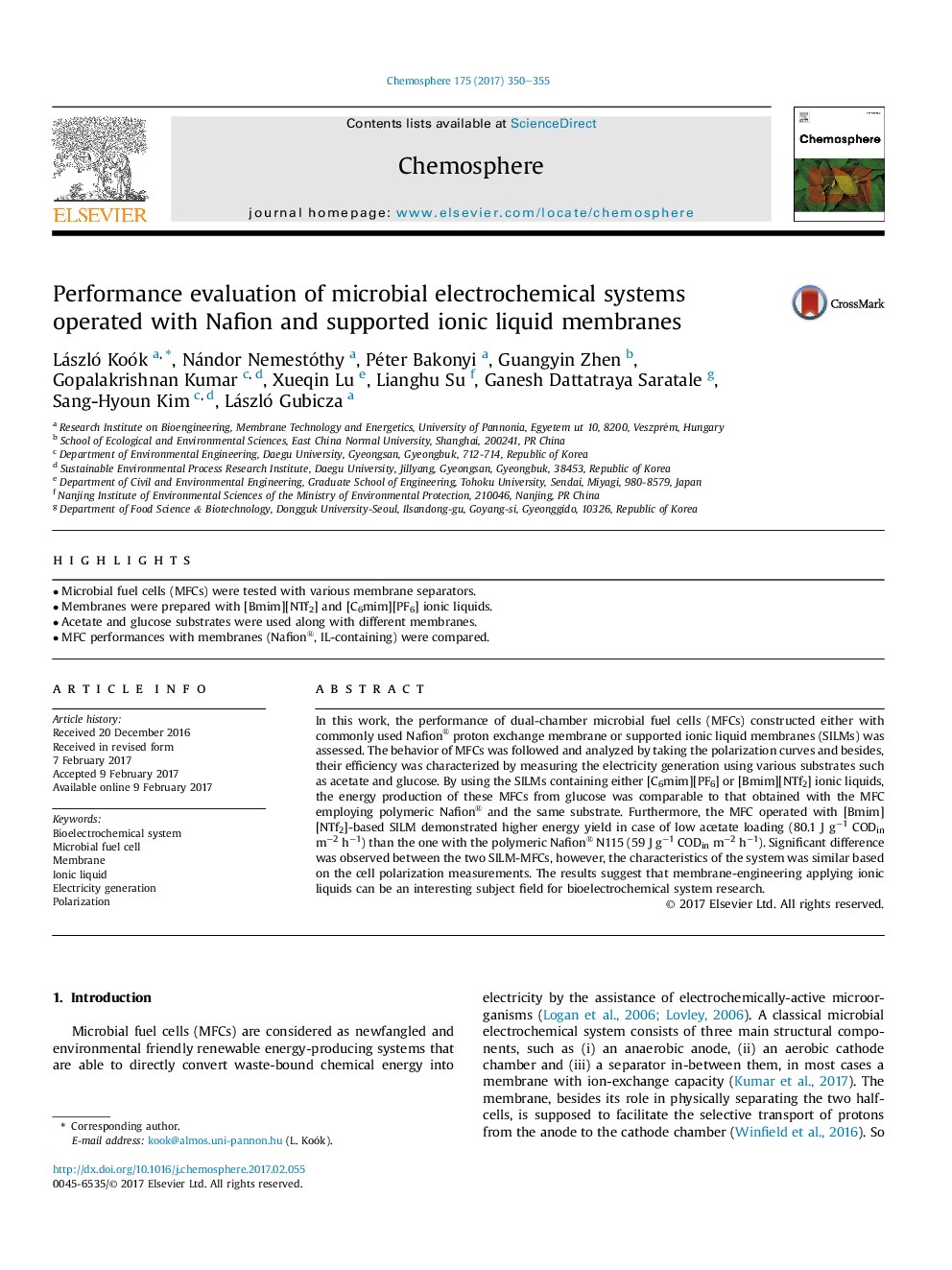| Article ID | Journal | Published Year | Pages | File Type |
|---|---|---|---|---|
| 5746524 | Chemosphere | 2017 | 6 Pages |
â¢Microbial fuel cells (MFCs) were tested with various membrane separators.â¢Membranes were prepared with [Bmim][NTf2] and [C6mim][PF6] ionic liquids.â¢Acetate and glucose substrates were used along with different membranes.â¢MFC performances with membranes (Nafion®, IL-containing) were compared.
In this work, the performance of dual-chamber microbial fuel cells (MFCs) constructed either with commonly used Nafion® proton exchange membrane or supported ionic liquid membranes (SILMs) was assessed. The behavior of MFCs was followed and analyzed by taking the polarization curves and besides, their efficiency was characterized by measuring the electricity generation using various substrates such as acetate and glucose. By using the SILMs containing either [C6mim][PF6] or [Bmim][NTf2] ionic liquids, the energy production of these MFCs from glucose was comparable to that obtained with the MFC employing polymeric Nafion® and the same substrate. Furthermore, the MFC operated with [Bmim][NTf2]-based SILM demonstrated higher energy yield in case of low acetate loading (80.1Â JÂ gâ1 CODin mâ2Â hâ1) than the one with the polymeric Nafion® N115 (59Â JÂ gâ1 CODin mâ2Â hâ1). Significant difference was observed between the two SILM-MFCs, however, the characteristics of the system was similar based on the cell polarization measurements. The results suggest that membrane-engineering applying ionic liquids can be an interesting subject field for bioelectrochemical system research.
